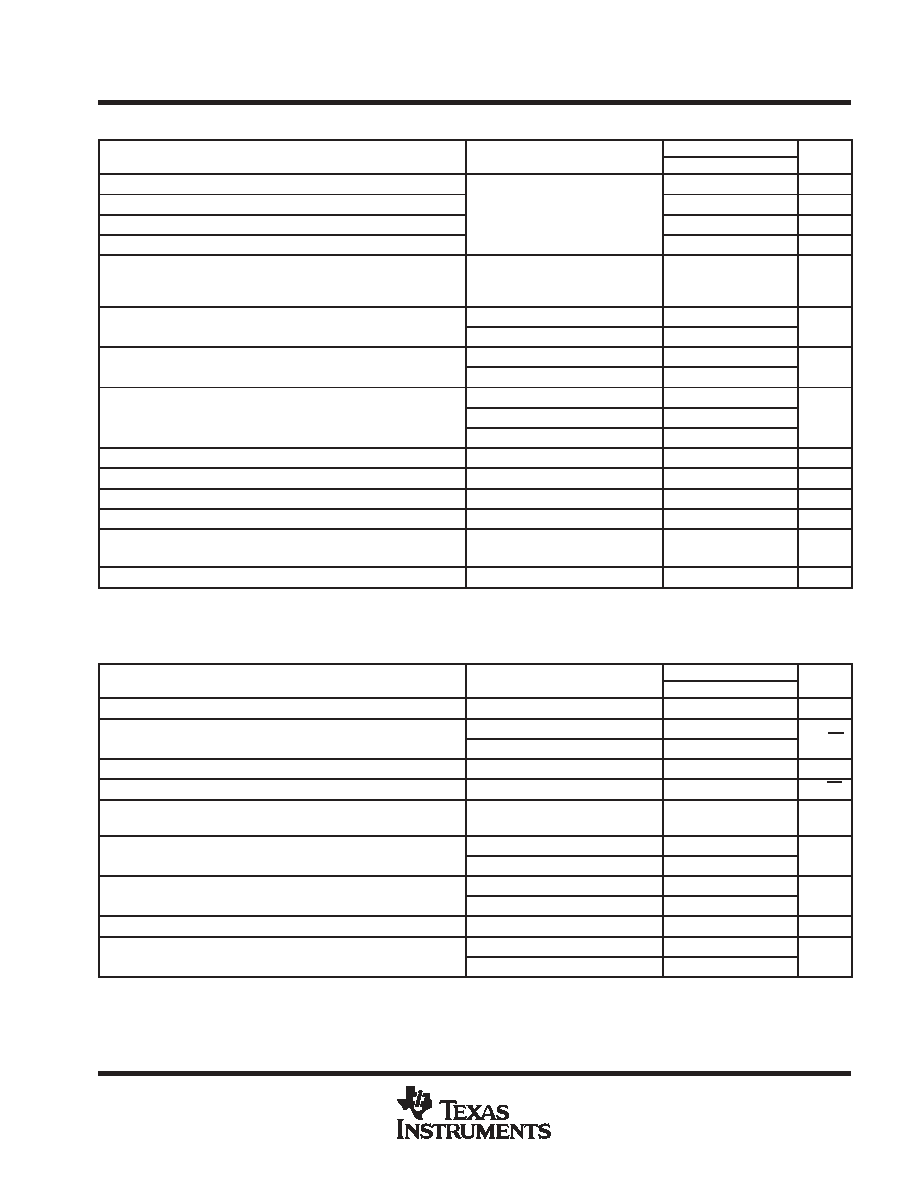- 您現(xiàn)在的位置:買賣IC網(wǎng) > PDF目錄97783 > 5962-9080702QHA (TEXAS INSTRUMENTS INC) OP-AMP, 4600 uV OFFSET-MAX, 1.3 MHz BAND WIDTH, CDFP10 PDF資料下載
參數(shù)資料
| 型號(hào): | 5962-9080702QHA |
| 廠商: | TEXAS INSTRUMENTS INC |
| 元件分類: | 運(yùn)算放大器 |
| 英文描述: | OP-AMP, 4600 uV OFFSET-MAX, 1.3 MHz BAND WIDTH, CDFP10 |
| 封裝: | CERAMIC, DFP-10 |
| 文件頁(yè)數(shù): | 25/81頁(yè) |
| 文件大小: | 1788K |
| 代理商: | 5962-9080702QHA |
第1頁(yè)第2頁(yè)第3頁(yè)第4頁(yè)第5頁(yè)第6頁(yè)第7頁(yè)第8頁(yè)第9頁(yè)第10頁(yè)第11頁(yè)第12頁(yè)第13頁(yè)第14頁(yè)第15頁(yè)第16頁(yè)第17頁(yè)第18頁(yè)第19頁(yè)第20頁(yè)第21頁(yè)第22頁(yè)第23頁(yè)第24頁(yè)當(dāng)前第25頁(yè)第26頁(yè)第27頁(yè)第28頁(yè)第29頁(yè)第30頁(yè)第31頁(yè)第32頁(yè)第33頁(yè)第34頁(yè)第35頁(yè)第36頁(yè)第37頁(yè)第38頁(yè)第39頁(yè)第40頁(yè)第41頁(yè)第42頁(yè)第43頁(yè)第44頁(yè)第45頁(yè)第46頁(yè)第47頁(yè)第48頁(yè)第49頁(yè)第50頁(yè)第51頁(yè)第52頁(yè)第53頁(yè)第54頁(yè)第55頁(yè)第56頁(yè)第57頁(yè)第58頁(yè)第59頁(yè)第60頁(yè)第61頁(yè)第62頁(yè)第63頁(yè)第64頁(yè)第65頁(yè)第66頁(yè)第67頁(yè)第68頁(yè)第69頁(yè)第70頁(yè)第71頁(yè)第72頁(yè)第73頁(yè)第74頁(yè)第75頁(yè)第76頁(yè)第77頁(yè)第78頁(yè)第79頁(yè)第80頁(yè)第81頁(yè)

TLE206x, TLE206xA, TLE206xB
EXCALIBUR JFET INPUT HIGHOUTPUT DRIVE
POWER OPERATIONAL AMPLIFIERS
SLOS193B FEBRUARY 1997 REVISED MAY 2004
31
POST OFFICE BOX 655303
DALLAS, TEXAS 75265
TLE2062Y electrical characteristics at VCC± = ±15 V, TA = 25°C (unless otherwise noted)
PARAMETER
TEST CONDITIONS
TLE2062Y
UNIT
PARAMETER
TEST CONDITIONS
MIN
TYP
MAX
UNIT
VIO
Input offset voltage
0.9
4
mV
αVIO
Input offset voltage long-term drift (see Note 4)
VIC = 0,
RS = 50
0.04
V/mo
IIO
Input offset current
VIC = 0,
RS = 50
2
pA
IIB
Input bias current
4
pA
11
12
VICR
Common-mode input voltage range
11
to
12
to
V
VICR
Common-mode input voltage range
to
13
to
16
V
VOM +
Maximum positive peak output voltage swing
RL = 10 k
13.2
13.7
V
VOM +
Maximum positive peak output voltage swing
RL = 600
12.5
13.2
V
VOM
Maximum negative peak output voltage swing
RL = 10 k
13.2
13.7
V
VOM
Maximum negative peak output voltage swing
RL = 600
12.5
13
V
VO = ±10 V,
RL = 10 k
30
230
AVD
Large-signal differential voltage amplification
VO = 0 to 8 V,
RL = 600
25
100
V/mV
AVD
Large-signal differential voltage amplification
VO = 0 to 8 V,
RL = 600
3
25
V/mV
ri
Input resistance
1012
ci
Input capacitance
4
pF
zo
Open-loop output impedance
IO = 0
560
CMRR
Common-mode rejection ratio
VIC = VICRmin,
RS = 50
72
90
dB
kSVR
Supply-voltage rejection ratio (
VCC/VIO)
VCC ± = ±5 V to ±15 V,
75
93
dB
kSVR
Supply-voltage rejection ratio (
VCC/VIO)
VCC ± = ±5 V to ±15 V,
RS = 50
75
93
dB
ICC
Supply current
VO = 0,
No load
625
690
A
NOTE 4: Typical values are based on the input offset voltage shift observed through 168 hours of operating life test at TA = 150°C extrapolated
to TA = 25 °C using the Arrhenius equation and assuming an activation energy of 0.96 eV.
TLE2062Y operating characteristics at VCC± = ±15 V, TA = 25°C
PARAMETER
TEST CONDITIONS
TLE2062Y
UNIT
PARAMETER
TEST CONDITIONS
MIN
TYP
MAX
UNIT
SR
Slew rate at unity gain (see Figure 1)
RL = 10 k,
CL = 100 pF
2.6
3.4
4
V/
s
Vn
Equivalent input noise voltage (see Figure 2)
f = 10 Hz,
RS = 20
70
nV/
√Hz
Vn
Equivalent input noise voltage (see Figure 2)
f = 1 kHz,
RS = 20
40
nV/
√Hz
VN(PP)
Peak-to-peak equivalent input noise voltage
f = 0.1 Hz to 10 Hz
1.1
V
In
Equivalent input noise current
f = 1 Hz
1.1
fA/
√Hz
THD
Total harmonic distortion
VO(PP) = 2 V,
AVD = 2,
RL = 10 k,
f = 10 kHz
0.025%
B1
Unity-gain bandwidth (see Figure 3)
RL = 10 k,
CL = 100 pF
2
MHz
B1
Unity-gain bandwidth (see Figure 3)
RL = 600 ,
CL = 100 pF
1.5
MHz
Settling time
0.1%
5
s
Settling time
0.01%
10
s
BOM
Maximum output-swing bandwidth
AVD = 1,
RL = 10 k
40
kHz
φm
Phase margin at unity gain (see Figure 3)
RL = 10 k,
CL = 100 pF
60
°
φm
Phase margin at unity gain (see Figure 3)
RL = 600 ,
CL = 100 pF
70
°
相關(guān)PDF資料 |
PDF描述 |
|---|---|
| 5962-9080801M2A | DUAL OP-AMP, 7000 uV OFFSET-MAX, 1.3 MHz BAND WIDTH, CQCC20 |
| 5962-9080801MPA | DUAL OP-AMP, 7000 uV OFFSET-MAX, 1.3 MHz BAND WIDTH, CDIP8 |
| 5962-9080802Q2A | DUAL OP-AMP, 6000 uV OFFSET-MAX, 1.3 MHz BAND WIDTH, CQCC20 |
| 5962-9080802QPA | DUAL OP-AMP, 6000 uV OFFSET-MAX, 1.3 MHz BAND WIDTH, CDIP8 |
| 5962-9080801MHA | DUAL OP-AMP, 7000 uV OFFSET-MAX, 1.3 MHz BAND WIDTH, CDFP10 |
相關(guān)代理商/技術(shù)參數(shù) |
參數(shù)描述 |
|---|---|
| 5962-9080702QPA | 制造商:Texas Instruments 功能描述:OP Amp Single GP 制造商:Rochester Electronics LLC 功能描述:- Bulk |
| 5962-9080703QPA | 制造商:Texas Instruments 功能描述:OP Amp Single GP |
| 5962-9080801M2A | 制造商:Texas Instruments 功能描述:OP Amp Dual GP 制造商:Rochester Electronics LLC 功能描述:- Bulk |
| 5962-9080801MHA | 制造商:Texas Instruments 功能描述:OP Amp Dual GP 制造商:Rochester Electronics LLC 功能描述:- Bulk |
| 5962-9080801MPA | 制造商:Texas Instruments 功能描述:OP Amp Dual GP |
發(fā)布緊急采購(gòu),3分鐘左右您將得到回復(fù)。